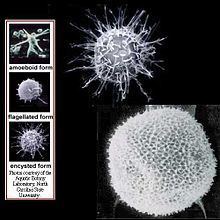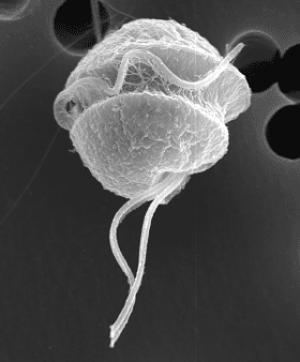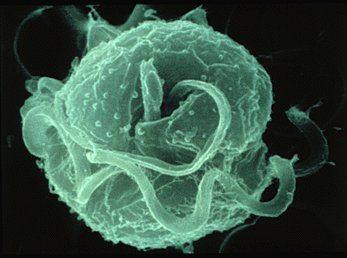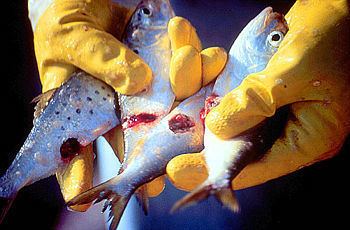Domain Eukaryota Order Phytodiniales Higher classification Pfiesteriaceae | Phylum Dinoflagellata Scientific name Pfiesteria Rank Genus | |
 | ||
Similar Dinoflagellate, Pfiesteria shumwayae, Karlodinium, Gymnodinium, Eukaryote | ||
Pfiesteria update an enduring debate
Pfiesteria is a genus of heterotrophic dinoflagellates that has been associated with harmful algal blooms and fish kills. Pfiesteria complex organisms (PCOs) were claimed to be responsible for large fish kills in the 1980s and 1990s on the coast of North Carolina and in tributaries of the Chesapeake Bay. In reaction to the toxic outbreaks, six states along the US east coast have initiated a monitoring program to allow for rapid response in the case of new outbreaks and to better understand the factors involved in Pfiesteria toxicity and outbreaks. New molecular detection methods have revealed that Pfiesteria has a worldwide distribution.
Contents
- Pfiesteria update an enduring debate
- The pfiesteria files trailer
- Discovery and naming
- Species
- Feeding strategy
- Controversy
- In fiction
- References

The pfiesteria files trailer
Discovery and naming
Pfiesteria was discovered in 1988 by North Carolina State University researchers JoAnn Burkholder and Ed Noga. The genus was named after Lois Ann Pfiester (1936–1992), a biologist who did much of the early research on dinoflagellates: "“The new family and genus are named in honor of the late Dr. Lois A. Pfiester, a pioneer in describing and unravelling the sexual life cycles of freshwater dinoflagellates and who unselfishly shared her knowledge, expertise, and enthusiasm with all who asked for assistance.”. An in-depth story of the discovery can be found in And the Waters Turned to Blood (1998) by Rodney Barker.
Species

There are two species described, Pfiesteria piscicida (from Latin Pisces, fish; cida, killer.), which has a complex life cycle and the species Pfiesteria shumwayae, also with a complex life cycle. The type locality of Pfiesteria piscicida is Pamlico River Estuary, North Carolina, U.S.A.
Feeding strategy

Early research resulted in the hypothesis that Pfiesteria acts as an "ambush predator" and utilizes a "hit and run" feeding strategy by releasing a toxin that paralyzes the respiratory systems of susceptible fish, such as menhaden, thus causing death by suffocation. It then consumes the tissue sloughed off its dead prey.
Controversy

Pfiesteria biology and the role of PCOs in killing fish and sickening humans have been subject to several controversies and conflicting research results over the last few years.
